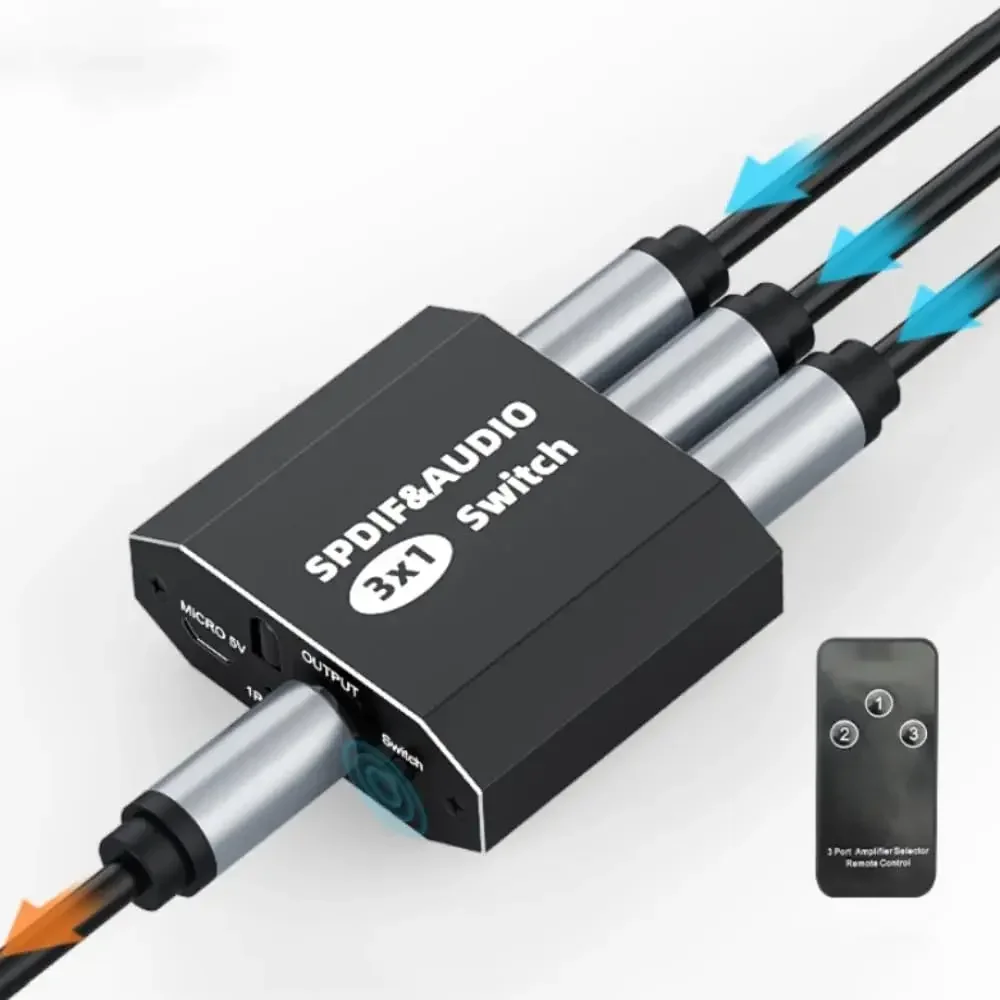What Is an Optical Audio Cable?
A Simple Guide for Music Lovers New to Audio
If you enjoy listening to music or watching movies and recently bought a soundbar or speaker, you may have heard about optical audio cables. But what are they, and do you actually need one?
Don’t worry — you’re not alone! Let’s break it down together.
So… What Exactly Is an Optical Audio Cable?
An optical audio cable (also called a TOSLINK or optical cable) is a special kind of cable that uses light to send sound signals from one device to another — like from your TV to a soundbar or speaker.
Unlike regular audio cables (like AUX or RCA) that use electricity, optical cables use light signals, which makes them less likely to pick up unwanted noise or interference.
In simple words:
Less noise. Cleaner sound. More enjoyable listening.

Why Would I Use an Optical Cable?
Here are some real-world reasons why an optical cable might be perfect for you:
1. Cleaner, Clearer Sound
If you’ve ever heard a slight hum or buzzing sound while listening to music or watching a movie, that’s likely from electrical interference.
Since optical cables don’t carry electricity, they completely avoid that kind of noise. This means your music and dialogue sound cleaner and more natural.
2. Easy to Set Up
Most TVs and soundbars today already have an optical port labeled “Optical” or “Digital Audio Out.”
All you have to do is plug one end into your TV and the other into your soundbar — that’s it!
No apps, no complicated settings. Just plug and play.
3. Great for Watching Movies
Optical cables support Dolby Digital and DTS, which are common surround sound formats in movies.
That means if you’re watching a film and want the sound to feel more immersive — like footsteps behind you or rain falling all around — an optical cable helps make that happen.
How Is It Different from Other Cables?
Here’s a simple comparison:
| Cable Type | Signal Type | Sound Quality | Common Use |
|---|---|---|---|
| AUX (3.5mm) | Analog (electric) | Basic | Phones, laptops |
| HDMI ARC | Digital (electric) | Excellent | TVs + home theater |
| Optical Cable | Digital (light) | Clear, low noise | TVs, soundbars, game consoles |
So, while HDMI might support more advanced features, optical is often easier and more reliable for simple high-quality sound setups.
When Should You Use an Optical Cable?
You might want one if:
-
You connect a TV to a soundbar or speaker system
-
You hear buzzing sounds using AUX or RCA cables
-
You want better sound without dealing with HDMI settings
-
You listen to music a lot and care about sound quality
-
You watch movies and want clearer dialogue and effects
Buying Tips for Beginners
-
Optical cables are sometimes labeled as TOSLINK or SPDIF — it’s all the same thing
-
The ends might have tiny plastic caps — remove them before plugging in
-
Try not to bend the cable too sharply. Keep it straight to avoid damage
-
You don’t need a long cable — just measure the space from TV to speaker and get a size that fits
If you love music or movies and want to hear all the details — without static, hums, or muffled sound — an optical audio cable might be just what you need.
It’s one small upgrade that can make a big difference in your everyday listening.
Want help picking one? Let me know in the comments!






